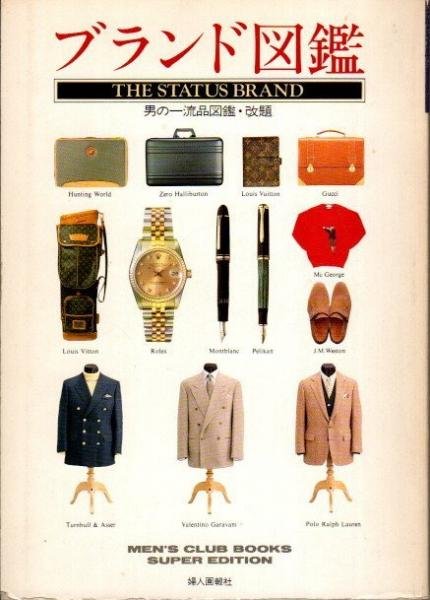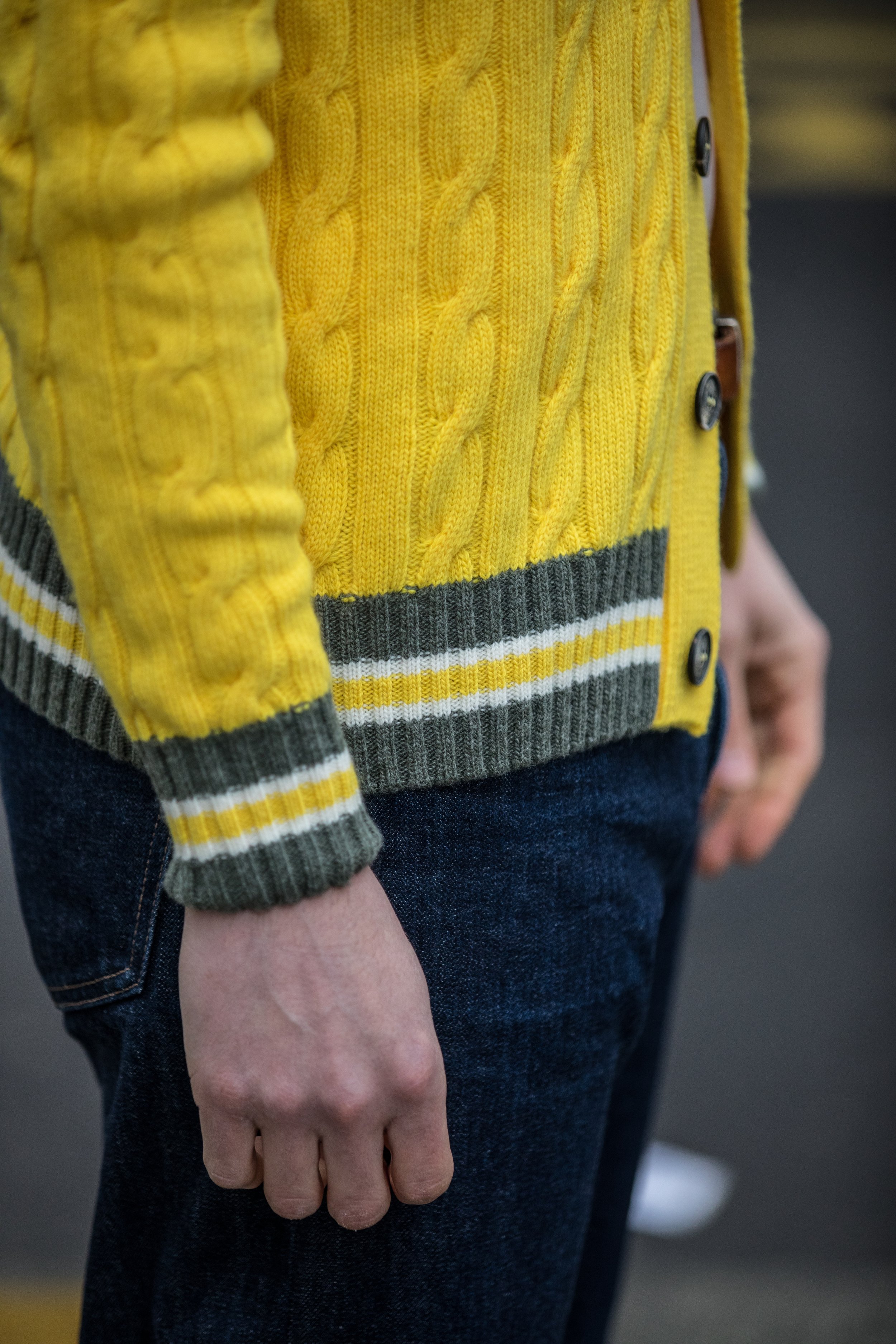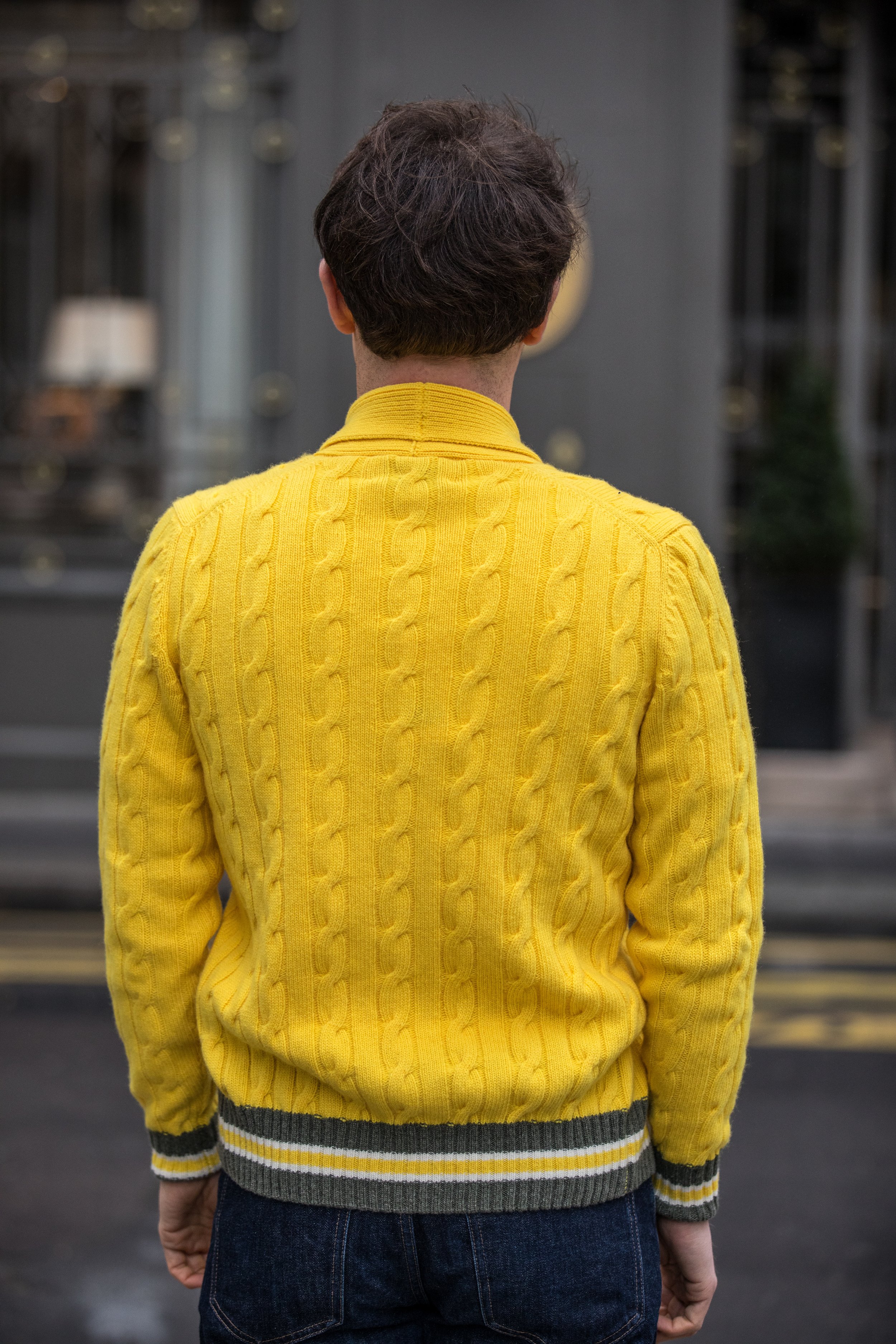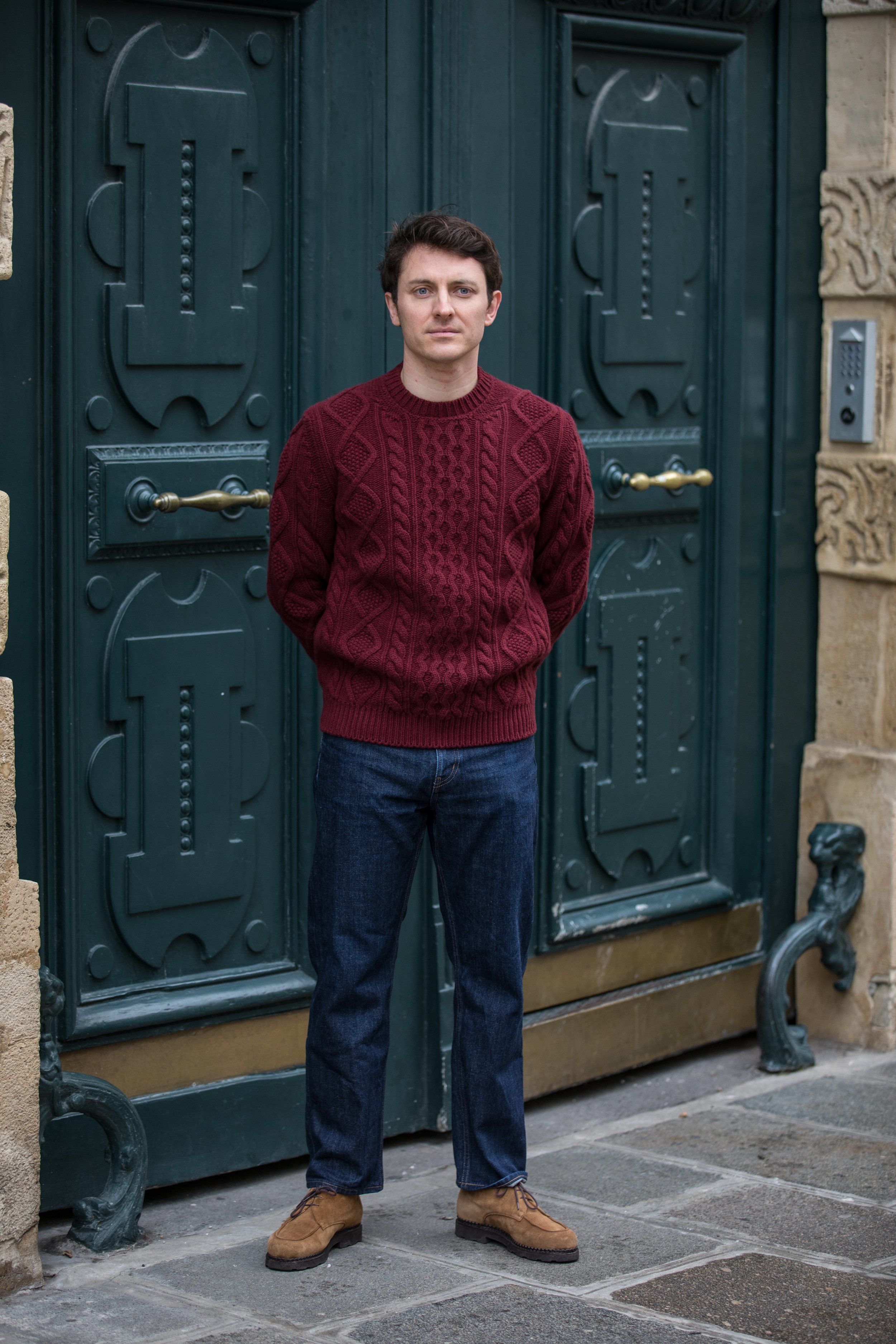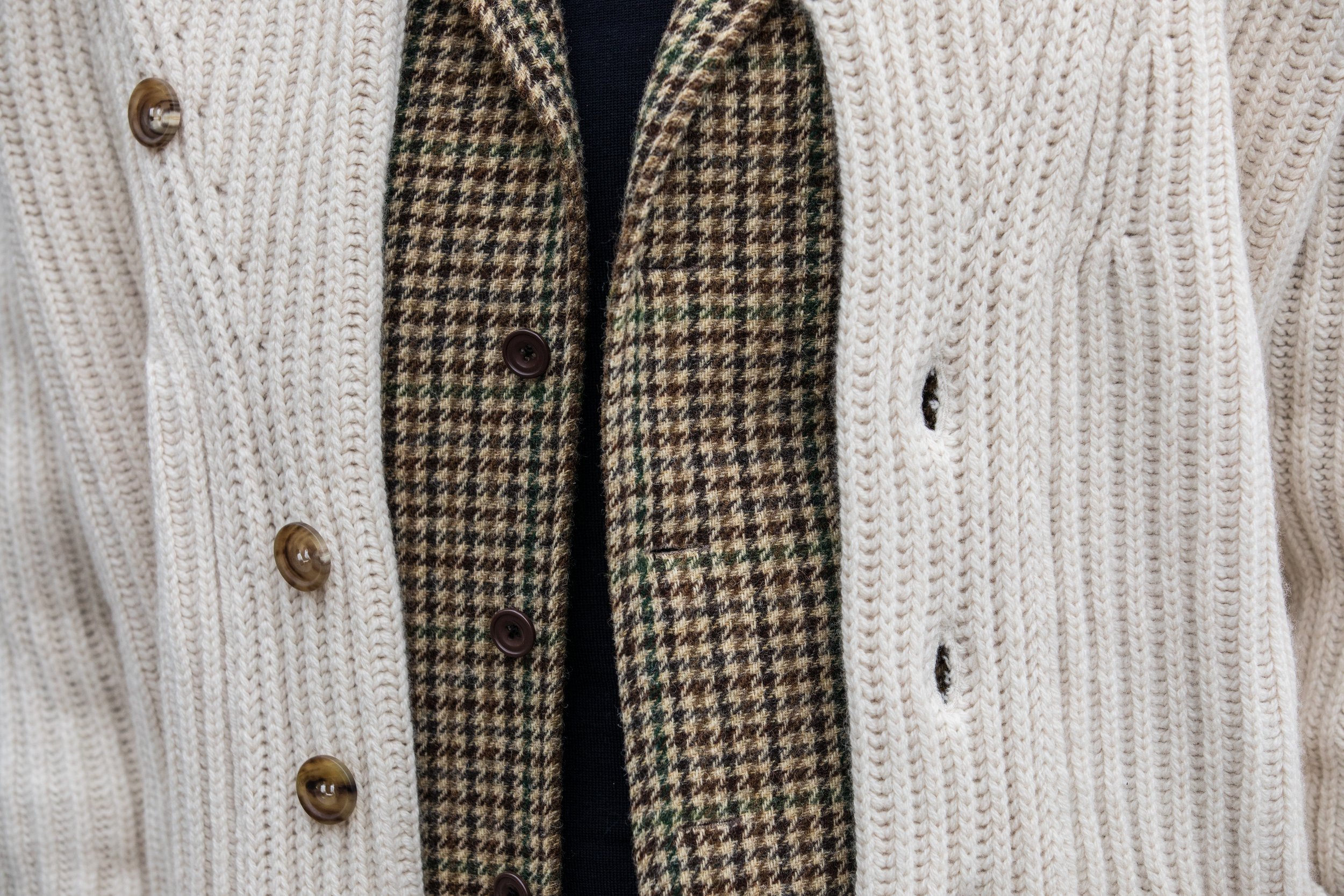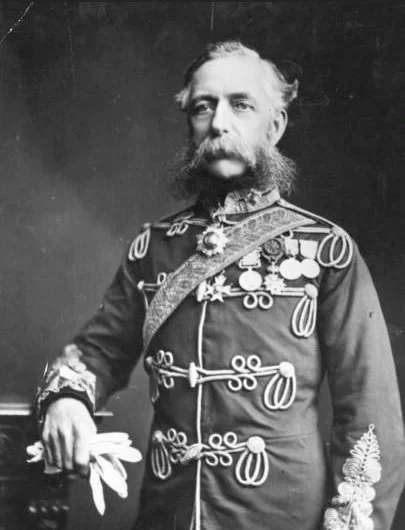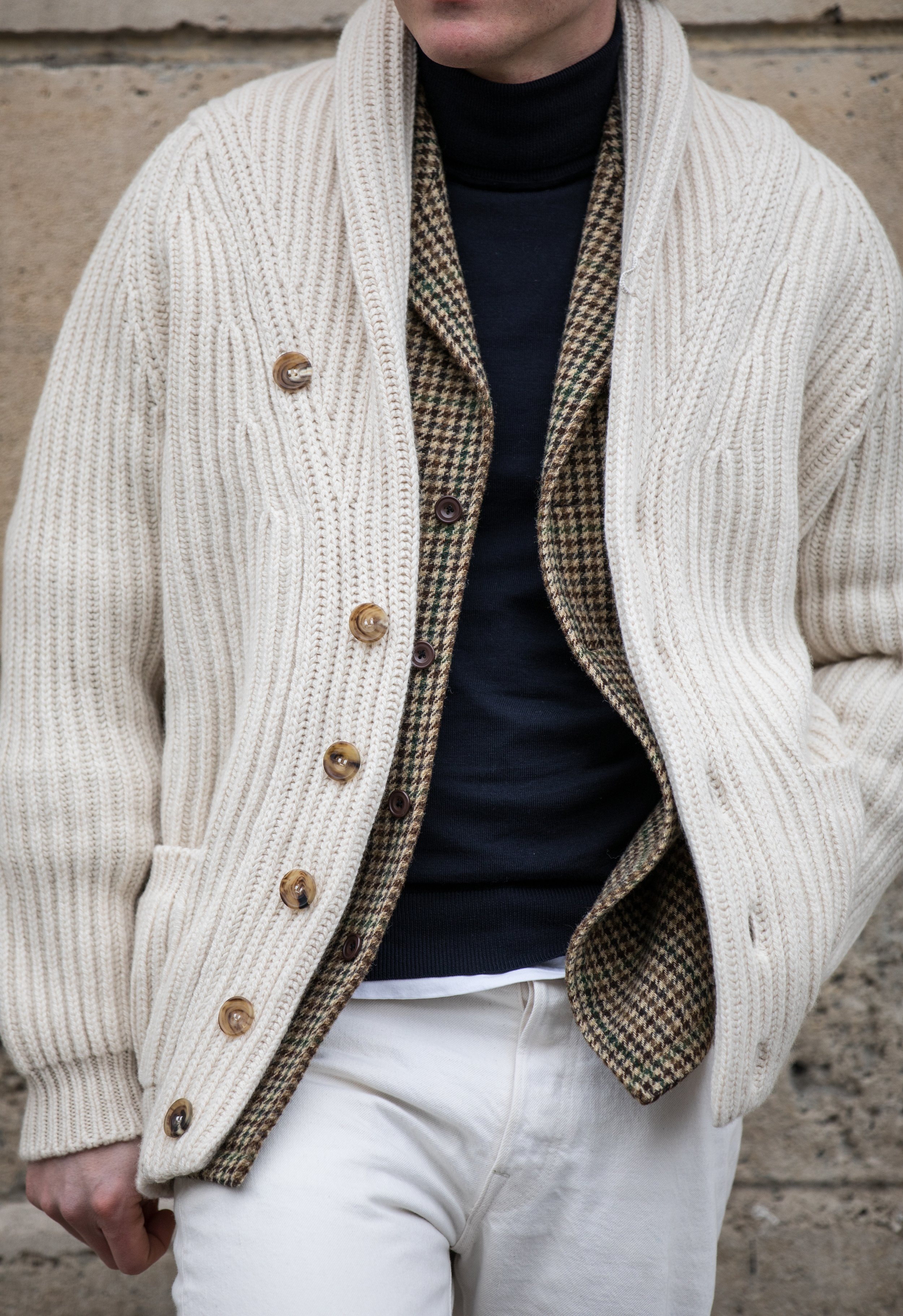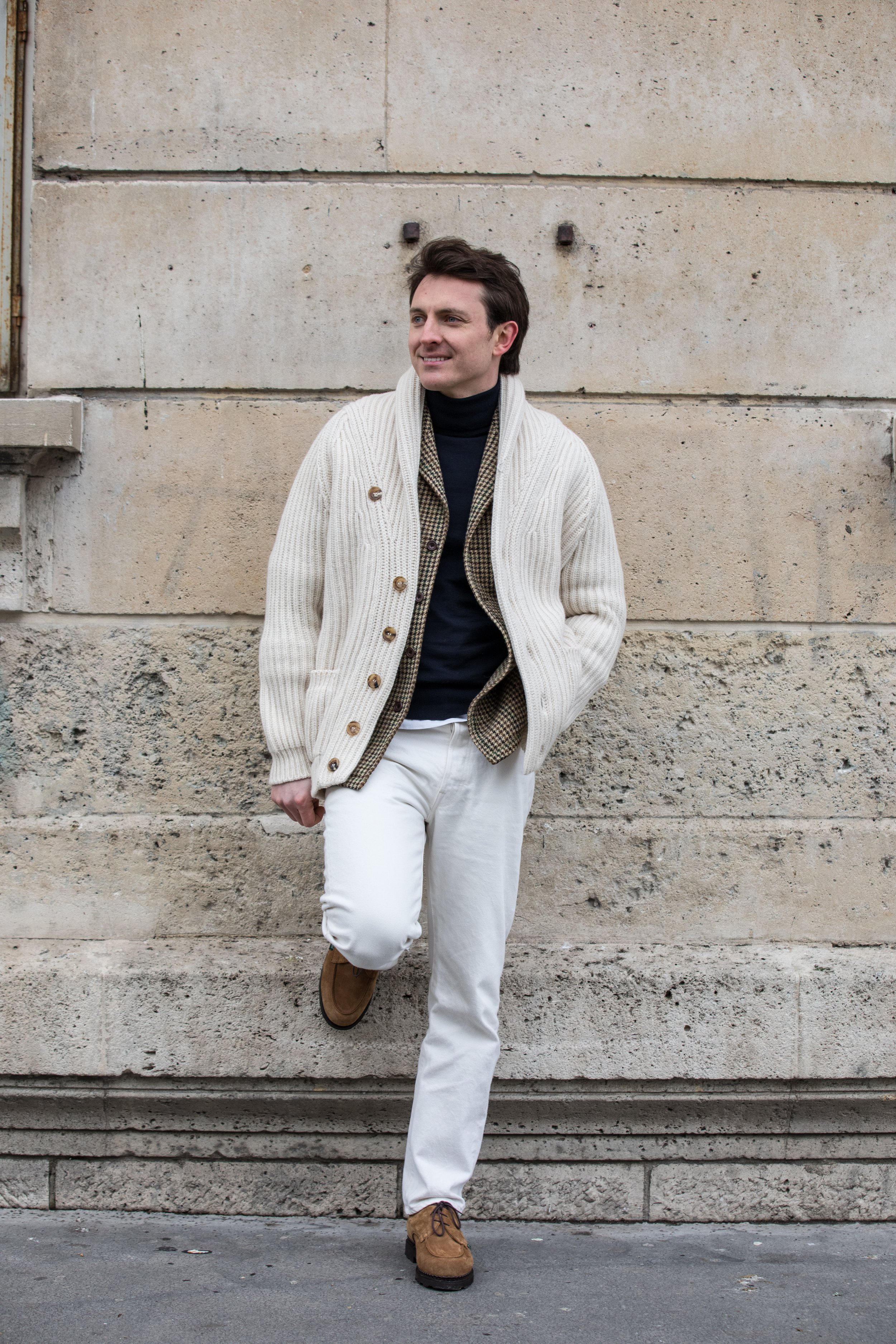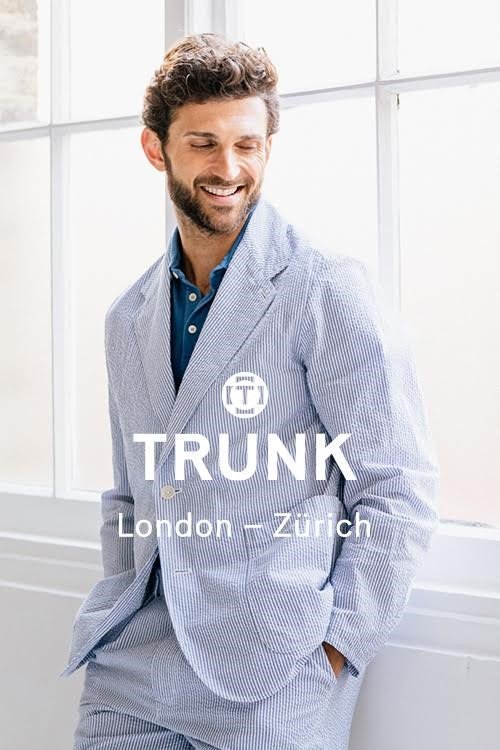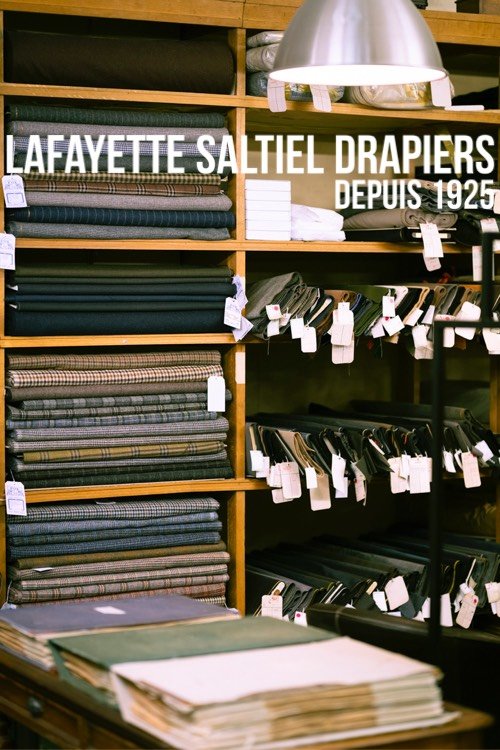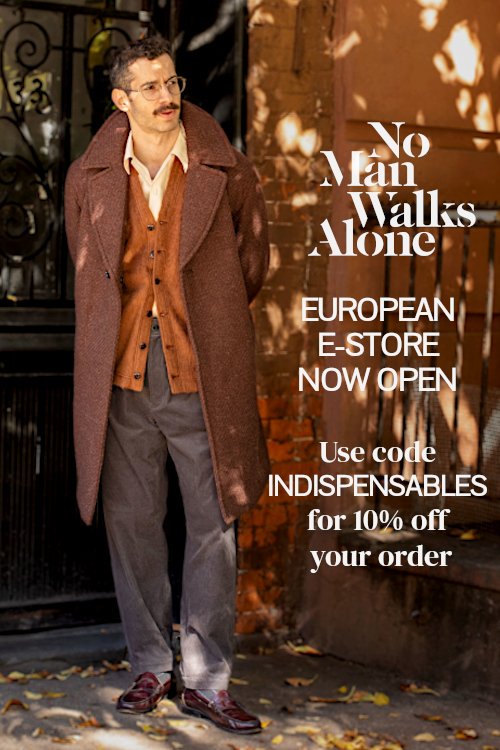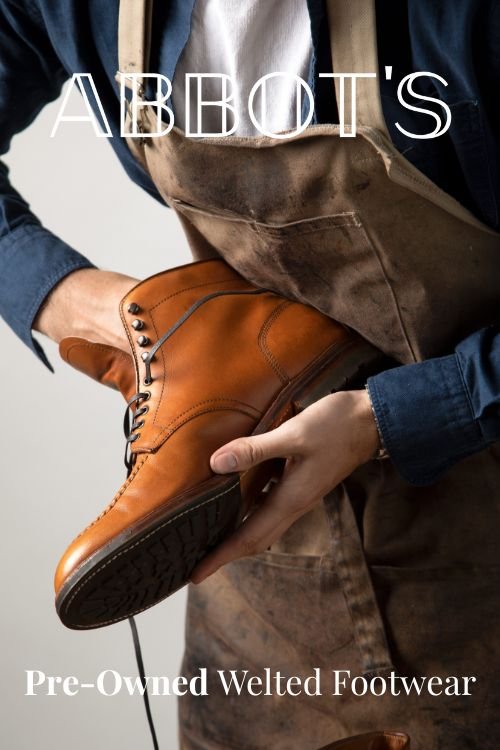Of this military heritage there is not much left – except the possibility of declining it in a technical material – the cardigan is a piece so anchored in the modern stylistic habits, that it became essential in the coherence of certain outfits. That's why today's brands offer their version of the cardigan.
We’d like for you to discover COLHAY'S version, a heavy-weight knitted cardigan made in Scotland in the purest British tradition.
Let's have a closer look.
Interview with the founder, Ronnie Chiu
To understand a brand – especially a young one like Colhay's born in 2019 – we think it is always interesting to turn to the person who founded it. That's why we asked Ronnie a few questions. His vision of clothing is precise and classic, take inspiration from his words!
1. Was Colhay’s born out of frustration you could not find wool garments you were looking for ?
In a way, yes, but the inspiration behind Colhay’s runs deeper than that. My father worked his whole life in the fashion industry, first in menswear in the 1970s then started his own fashion jewelry and accessories business. Growing up, I would visit his workplace and remember seeing piles of fashion magazines on his big oak desk, and thousands of samples hung on walls and strewn across his showroom. As a result, from a young age, my father had a big influence on me style-wise; he was a “cool” dad and dressed immaculately; one of those fathers who always had something to say about the outfit I was wearing and either nodded approvingly or frowned disapprovingly! I remember going shopping together and he’d give me all manner of styling advice, as you’d expect of a father working in fashion. So my love and interest in clothes came from him and it is no surprise that I ended up going into menswear. Perhaps the biggest mark he left on me was his belief in investing in the highest quality clothing, taking care of it for a long time, because it’ll then take care of you.
In particular, he held a strong belief that British made clothing is the highest quality and worth the investment, being somebody who grew up in British colonial Hong Kong. He passed on to me two made in Scotland sweaters that he bought with his first paycheck in the 1970s, in pristine condition after some 40+ years of wear and hand washing. I was so impressed by the quality that I went on a hunt to find the same quality of sweaters that my father spoke so fondly of, but struggled to find that same level of quality of which would, at the same time, designed to flatter the wearer – if the quality was there, the style was not; and vice versa. I eventually found the town in Scotland where my father’s sweaters were made all those years ago. Some of the manufacturers remain, although much smaller, are still making to the same quality as they were when they made my father’s sweaters all those years ago. In fact, one of the factory managers recognized the label on my father’s sweater right away and joked he probably helped make the sweater when he was a young guy 40 years ago!
That’s how Colhay’s was born – the idea is to combine heirloom quality (garments that last a lifetime) with an aesthetic and design that would flatter the wearer. Contemporary, yes, but it’s really about creating garments that last decades, whilst ensuring that they make the wearer look good for the modern age! As a result, I spend a lot of time designing and redesigning the smallest details – how slim the waist or ribbed hems should be, how the collar should sit on a garment. I spend a lot of time also on colours and patterns – to balance between making the wearer look stylish, whilst being elegant at the same time, so that he doesn’t attract unwanted attention!
For example, our superfine lambswool cricket sweater has a v neck trim that is deliberately cut deeper, and also made in very dark burgundy, olive, navy, cream stripes. I believe these design details flatter the wearer a lot more, makes the garment look more modern and relevant, compared to very traditional cricket sweaters with much brighter colours, and tighter, small v necks. Every one of our products in our range follows the same philosophy.
2. We’ve been witnessing a staggering comeback of the cardigan these past 2 years. In what way did you try to change or compose with the « elderly » image the garment has for some people?
Good question! The cardigan is a great garment – it has that nonchalant feel to it. It’s extremely comfortable and just about goes with any outfit. Given this, it is no surprise that the cardigan is a favorite style of ours as well. As I mentioned above, with any product, we want to make sure that the garment flatters the wearer, and there are some design elements that help make the piece look more modern to shake that “elderly” image. For example, with our newest cashmere painter’s shawl collar cardigan, we deepened the v shape of the shawl collar by lowering the buttoning point so that it sits just on the belly button. This exaggerates the inverted v shape from the shoulder to the waist (like a tailored jacket), and broadens the shoulders whilst slimming down the waist. The shawl collar, when folded down, also copies the “lapel roll” you get on a high quality canvassed tailored jacket:

